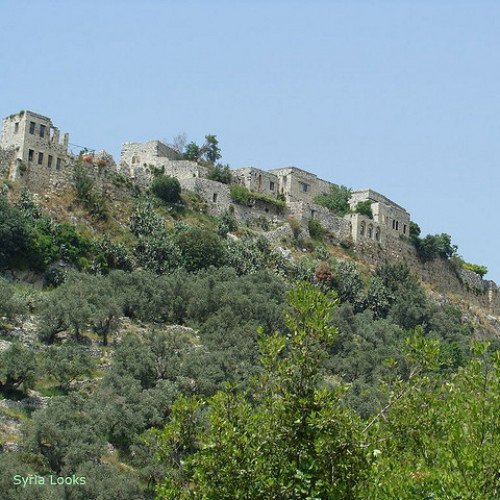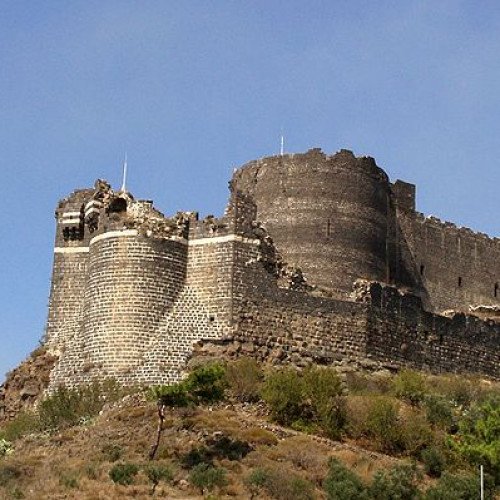Castles of "Syria" KHAWABI vs MARGAT

KHAWABI
Khawabi (Arabic: الخوابي), also spelled Qala'at al-Khawabi (Arabic: قلعة الخوابي) is a village and medieval citadel in northwestern Syria, administratively part of the Tartus Governorate, located 20 kilometers northeast of Tartus and 12 kilometers east of al-Sawda. Khawabi is situated in a hilly area, surrounded by olive groves, in the Coastal Mountain Range. Nearby localities include al-Sawda and to the west, Al-Annazah to the northwest, al-Qamsiyah to the north, Brummanet Raad to the northeast, al-Shaykh Badr to the east, Khirbet al-Faras to the south and Bimalkah to the southwest. According to the Syria Central Bureau of Statistics, Khawabi had a population of 1,039 in the 2004 census. Its inhabitants are predominantly Sunni Muslims. The village formerly had a significant Ismaili population until the early 20th century, and during the medieval period, its citadel (Qala'at Khawabi) served as a center of the Ismaili community when they were known as the Assassins. The citadel itself has been inhabited since at least the 12th century.
Statistics for this Xoptio

MARGAT
Margat, also known as Marqab (Arabic: قلعة المرقب, romanized: Qalaat al-Marqab, lit. 'Castle of the Watchtower'), is a castle near Baniyas, Syria, which was a Crusader fortress and one of the major strongholds of the Knights Hospitaller. It is located around 2 kilometres (1.2 mi) from the Mediterranean coast and approximately 6 kilometres (3.7 mi) south of Baniyas. The castle remained in a poor state of preservation until 2007 when some reconstruction and renovation began. Margat is located on a hill formed by an extinct volcano high about 360 metres (1,180 ft) above sea level on the road between Tripoli and Latakia, overlooking the Mediterranean Sea. According to Arab sources, the site of Margat Castle was first fortified in 1062 by Muslims who continued to hold it within the Christian Principality of Antioch in the aftermath of the First Crusade. When the Principality was defeated at the Battle of Harran in 1104, the Byzantine Empire took advantage of their weakness and captured Margat from the Muslims. A few years later it was captured by Tancred, Prince of Galilee, regent of Antioch, and became part of the Principality. In the 1170s, it was controlled by Reynald II Mazoir of Antioch as a vassal of the count of Tripoli. The fortress was so large that it had its own household officials and a number of rear-vassals. Reynaud's son Bertrand sold it to the Hospitallers in 1186 as it was too expensive for the Mazoir family to maintain. After some rebuilding and expansion by the Hospitallers it became their headquarters in Syria. Under Hospitaller control, its fourteen towers were thought to be impregnable. In 1188, Saladin marched on Margat having left Krak des Chevaliers in search of easier prey. According to Abu'l-Fida, "Recognising that Maqab was impregnable and that he had no hope of capturing it, he passed on to Jabala". It was one of the few remaining territories left in Christian hands after Saladin's conquests. By the beginning of the 13th century the Hospitallers controlled the surrounding land and roads and made a large profit from travellers and pilgrims passing through. Isaac Comnenus of Cyprus was imprisoned there after Richard I of England captured Cyprus from him during the Third Crusade. The bishop of nearby Valenia also used Margat as his headquarters after around 1240. Margat was second in size and power only to the other Hospitaller fortress to the south, Krak des Chevaliers.